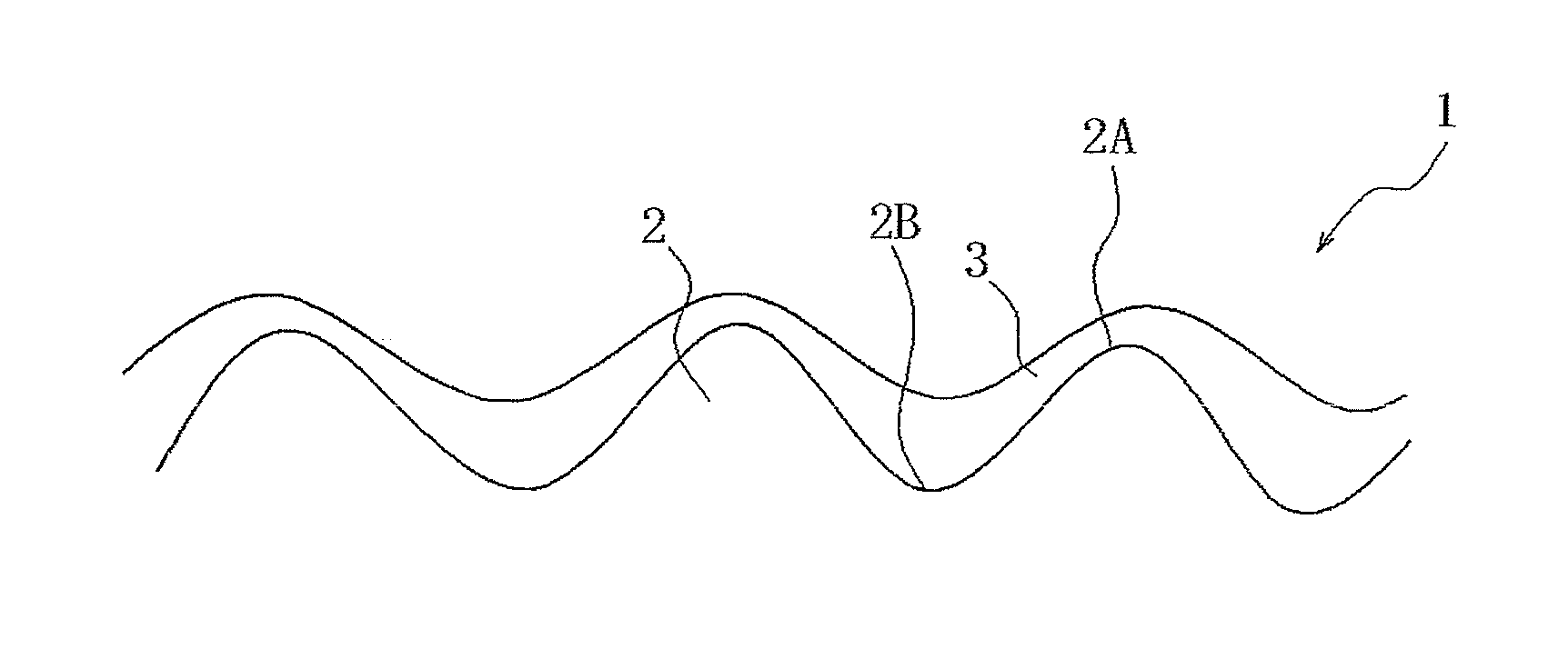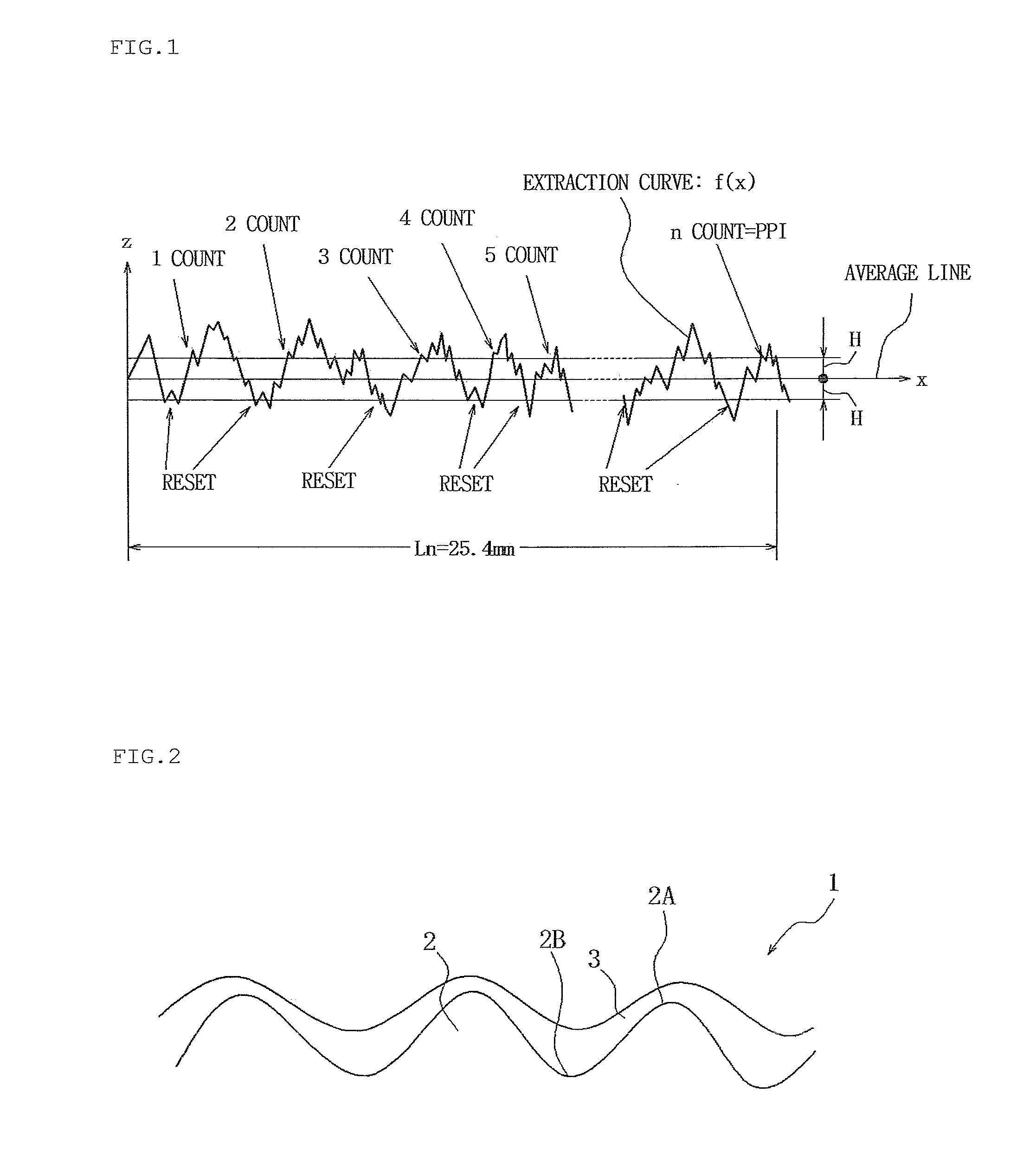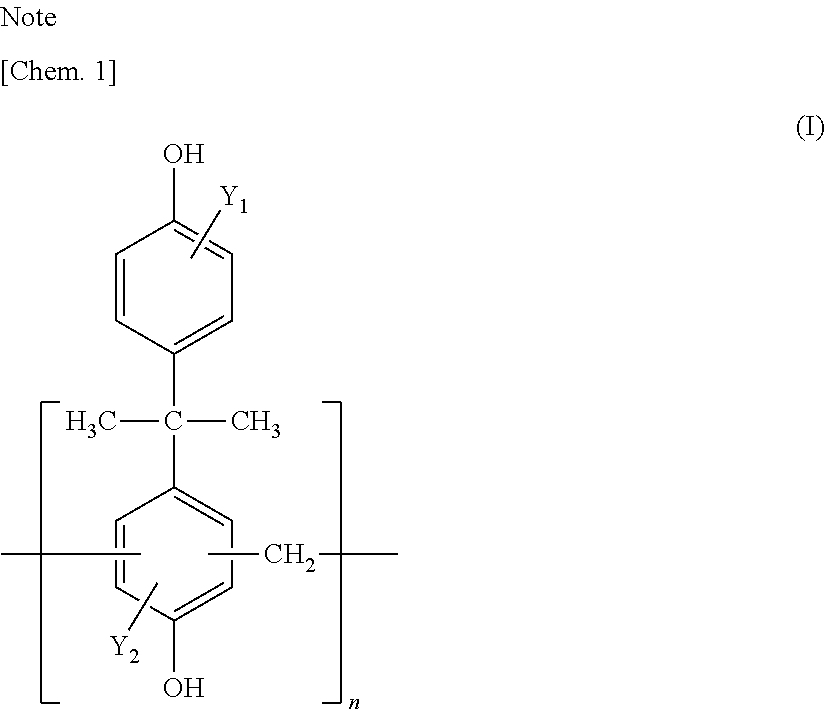Hot-dip galvanized steel sheet and method for producing the same
a technology of galvanized steel and hot-dip galvanizing, which is applied in the direction of electrically conductive paints, transportation and packaging, coatings, etc., can solve the problems of reducing the use of hexavalent chromium, and affecting the appearance of galvanized steel sheets. uniform, low reactivity
- Summary
- Abstract
- Description
- Claims
- Application Information
AI Technical Summary
Benefits of technology
Problems solved by technology
Method used
Image
Examples
example 1
[0105]A galvanized coating film was formed on a steel sheet by hot-dip galvanization, and then the steel sheet was temper-rolled with an electro-discharge roll having a Ra of 2.1 μm and a PPI of 250 under the conditions of an elongation percentage of 1% and nonuse of rolling oil so as to adjust the roughness of the galvanized surface to a Ra of 0.7 m and a PPI of 170, thereby forming a galvanized steel sheet shown in Table 7.
[0106]A resin compound (a) shown in Table 1 (Tables 1a and 1b), urethane (b) shown in Table 2, a silane coupling agent (c) shown in Table 3, a titanium compound (d) shown in Table 4, a vanadium compound (e) shown in Table 5, and wax (w) emulsion shown in Table 6 were appropriately mixed to prepare a surface treatment agent. Specifically, the surface treatment agent was prepared so as to have each of the compositions shown in Tables 8 and adjusted to pH shown in Tables 8 using phosphoric acid, acetic acid, formic acid, hydrofluoric acid, or fluoride as an acid co...
example 2
[0181]Next, a coating film was formed by the same method as in Example 1 using each of the surface treatment agents (compositions of Nos. 1 and 31) within the scope of the present invention while the coated surface roughness of the hot-dip galvanized steel sheet (GI) shown in Table 7 was variously changed, and the surface appearance, conductivity, and corrosion resistance were evaluated. The evaluation methods and evaluation criteria were the same as in Example 1. The evaluation results and Ra and PPI values are shown in Tables 9.
TABLE 9-1RoughnessSurface treatment agentof coatedType: No. 1surfaceSurfaceCorrosion resistance(Invention Example 1)RaappearanceConductivity(3)(4)(5)No.μmPPI(1)(2)Plane portionBend portionAfter degreasing78Comparative Example0.4170ΔΔ⊚⊚⊚79Invention Example0.5170◯◯⊚⊚⊚80Invention Example0.7170◯◯⊚⊚⊚81Invention Example1.2170◯◯⊚⊚⊚82Invention Example2.0170◯◯◯◯◯83Comparative Example2.2170◯◯ΔΔΔ84Comparative Example0.7140ΔΔ⊚⊚⊚85Invention Example0.7150◯◯⊚⊚⊚86Invention...
PUM
| Property | Measurement | Unit |
|---|---|---|
| Ra | aaaaa | aaaaa |
| pH | aaaaa | aaaaa |
| temperature | aaaaa | aaaaa |
Abstract
Description
Claims
Application Information
 Login to View More
Login to View More - R&D
- Intellectual Property
- Life Sciences
- Materials
- Tech Scout
- Unparalleled Data Quality
- Higher Quality Content
- 60% Fewer Hallucinations
Browse by: Latest US Patents, China's latest patents, Technical Efficacy Thesaurus, Application Domain, Technology Topic, Popular Technical Reports.
© 2025 PatSnap. All rights reserved.Legal|Privacy policy|Modern Slavery Act Transparency Statement|Sitemap|About US| Contact US: help@patsnap.com



